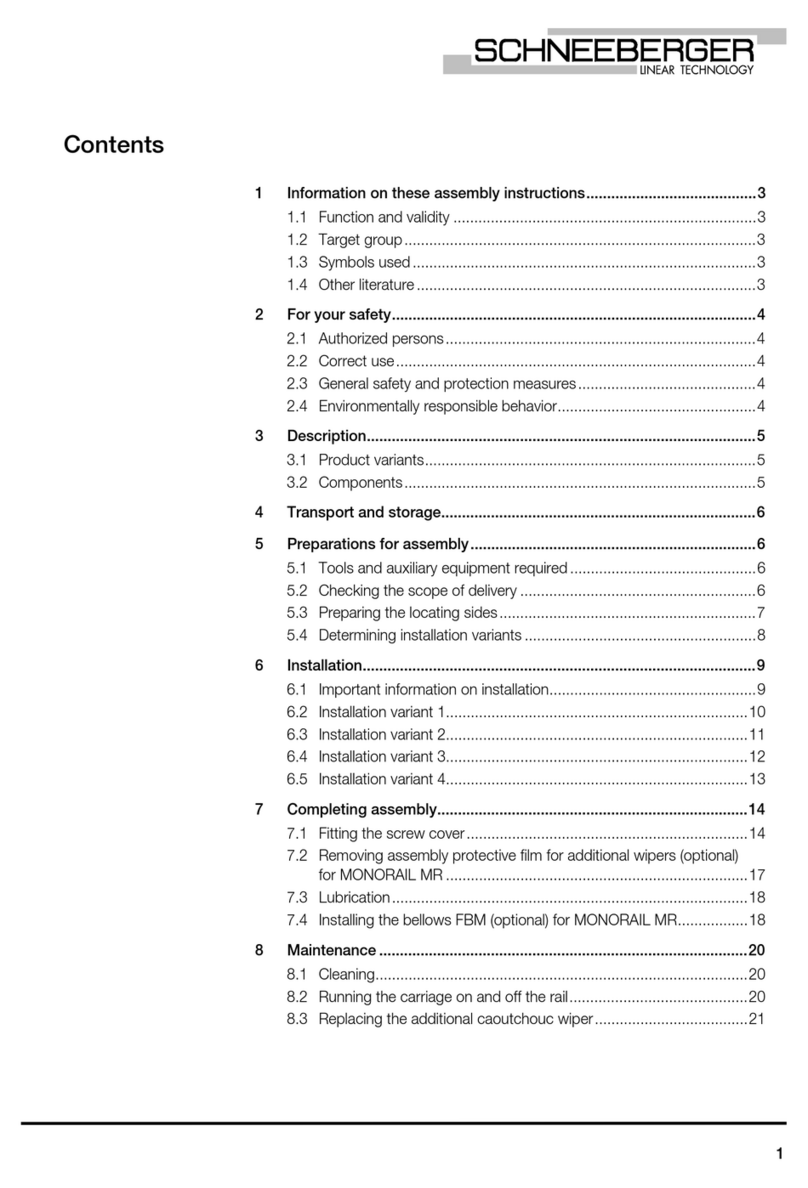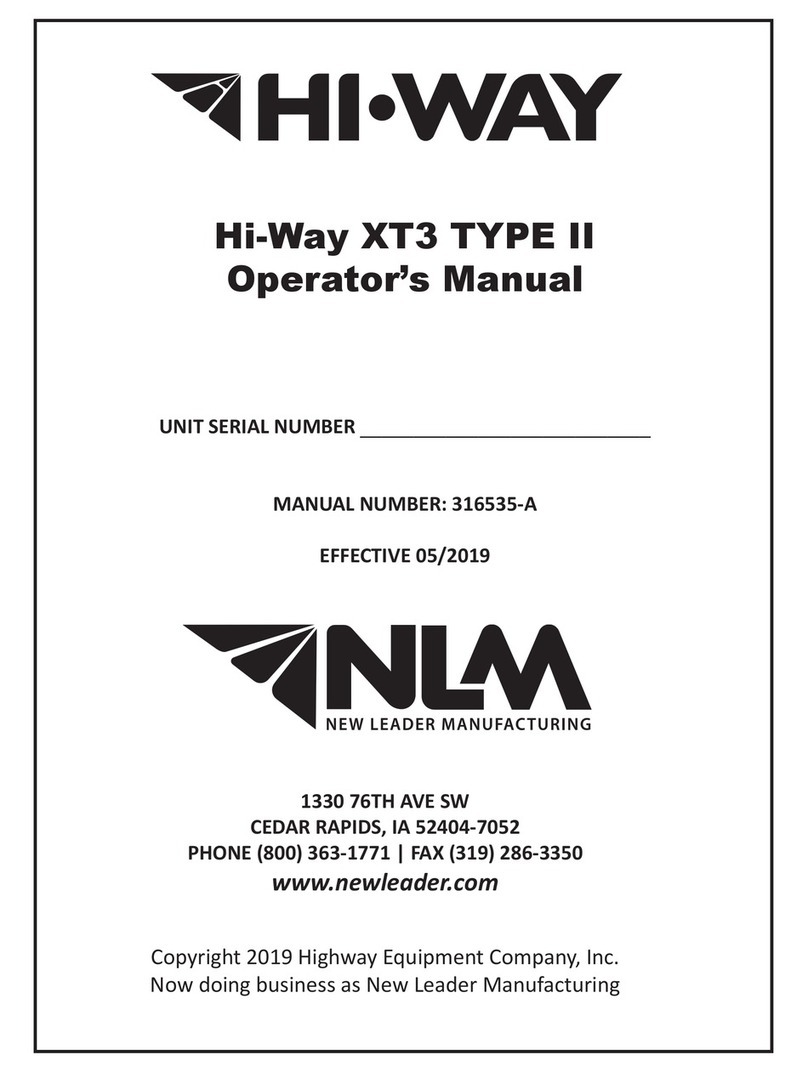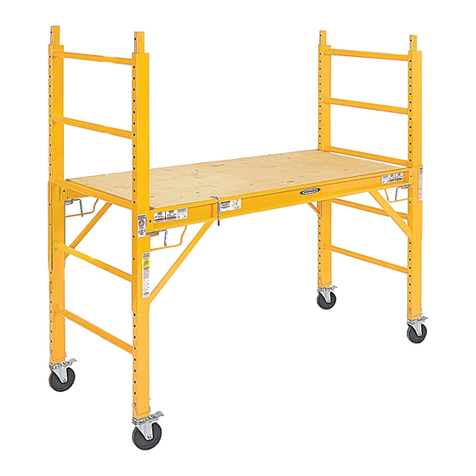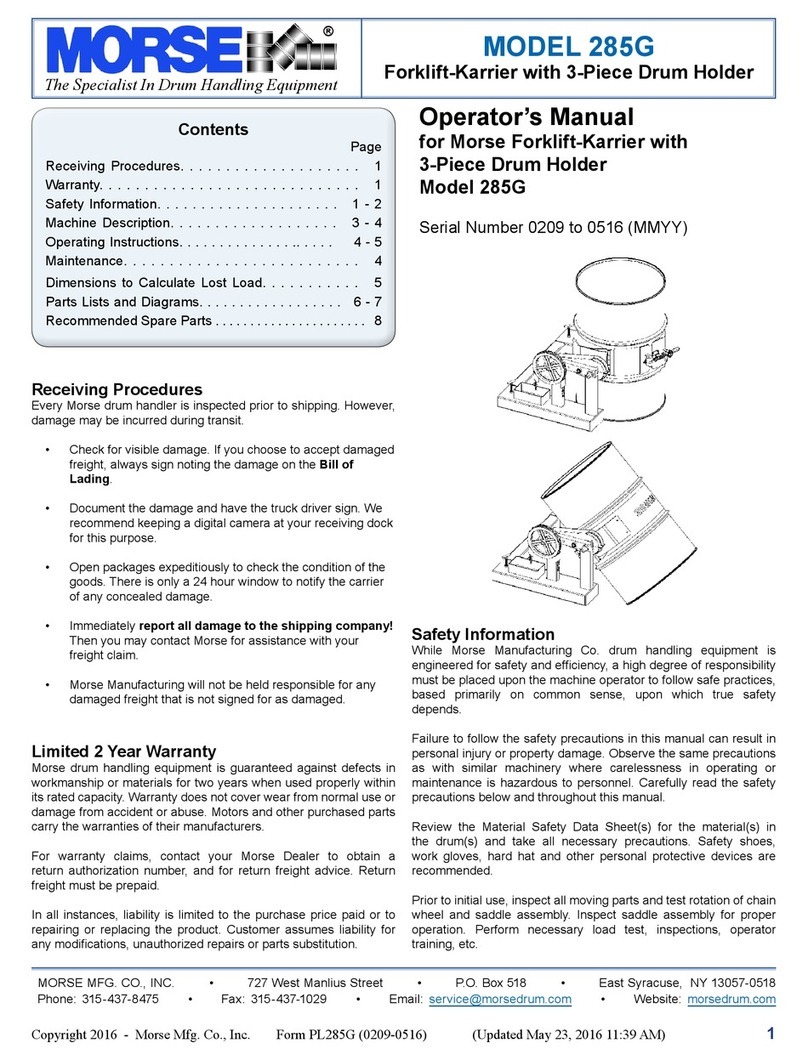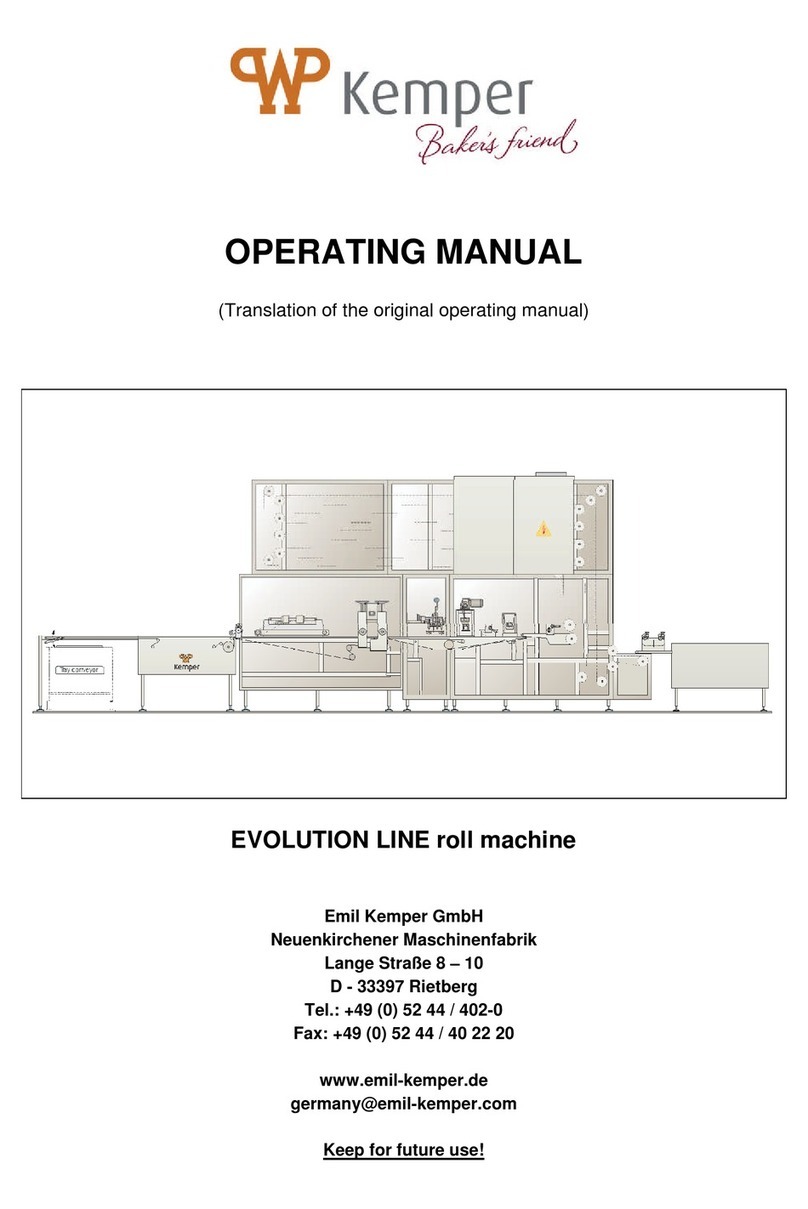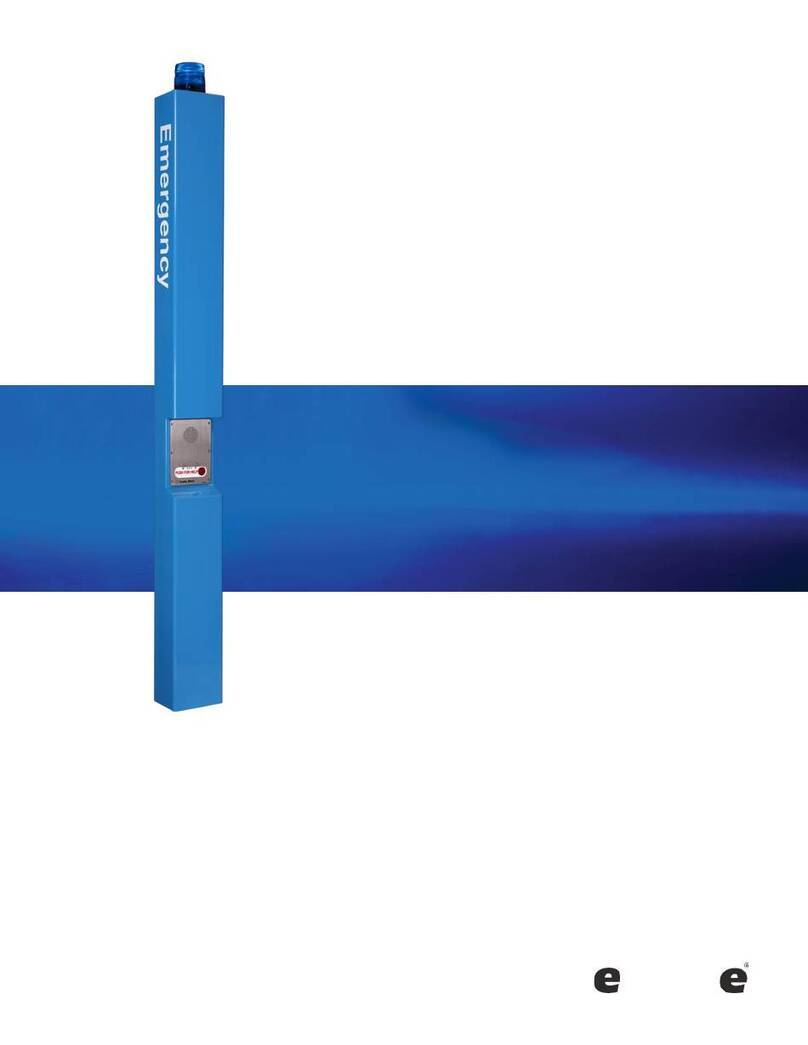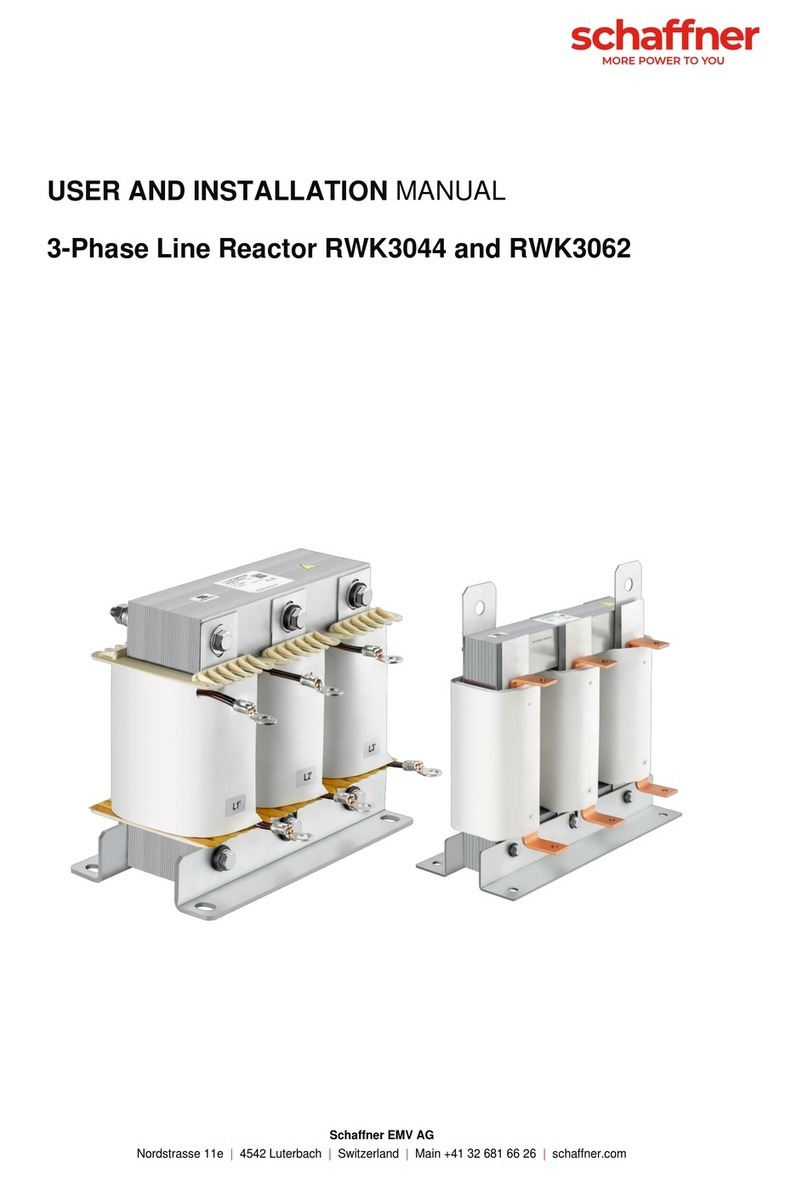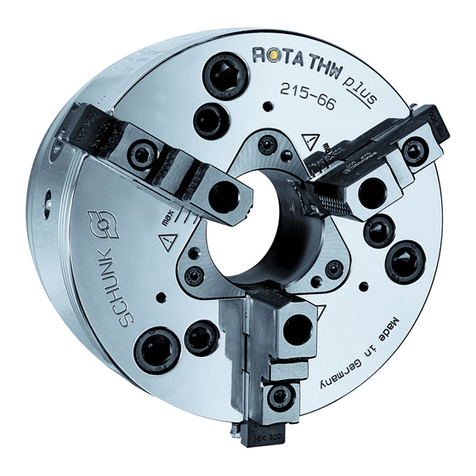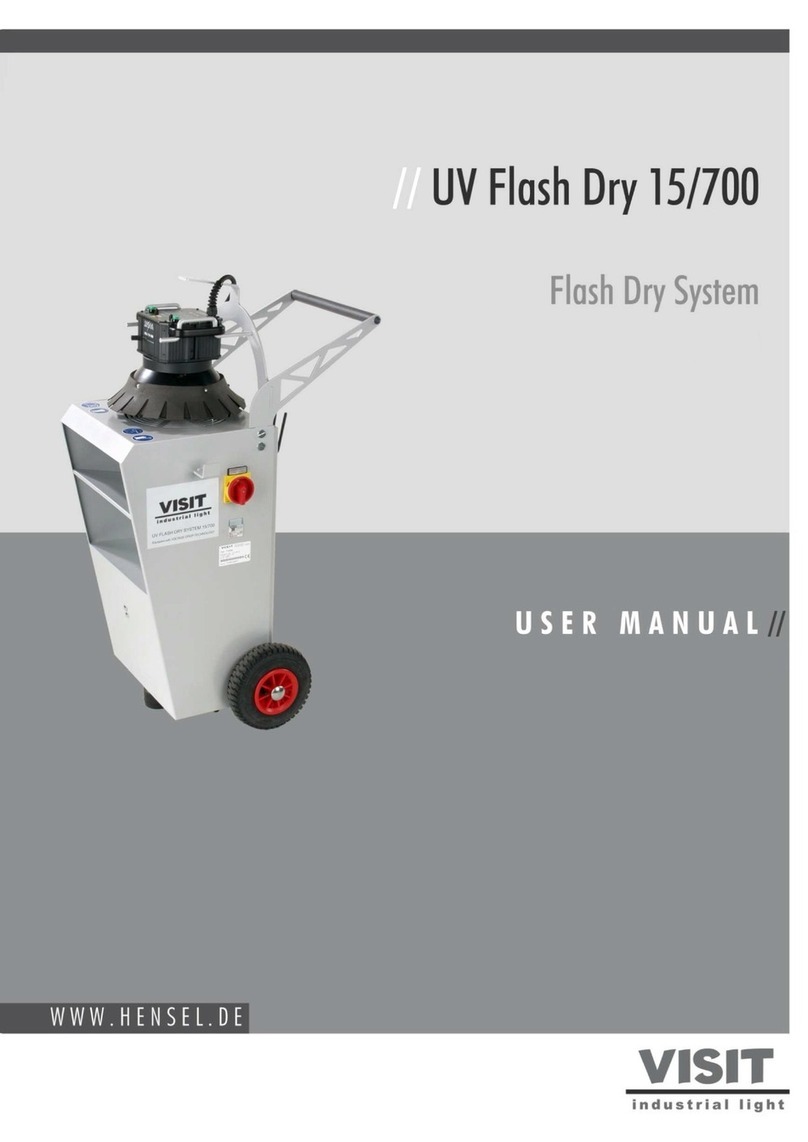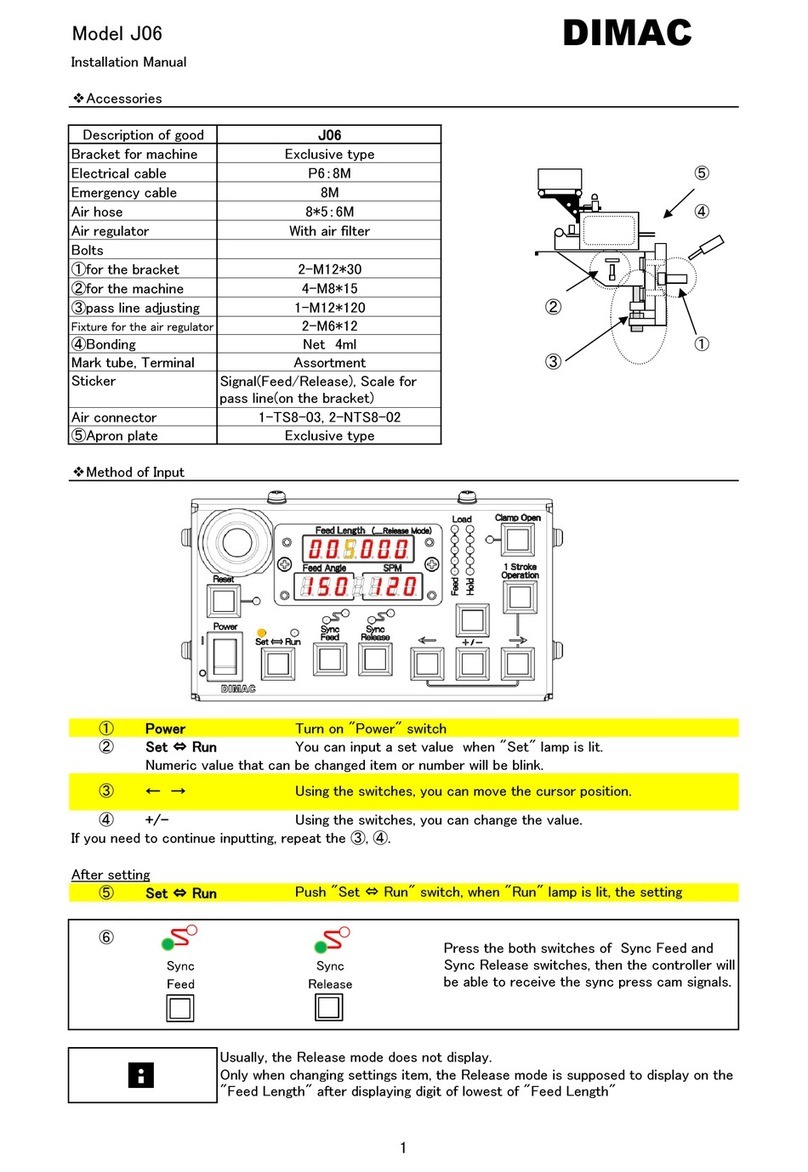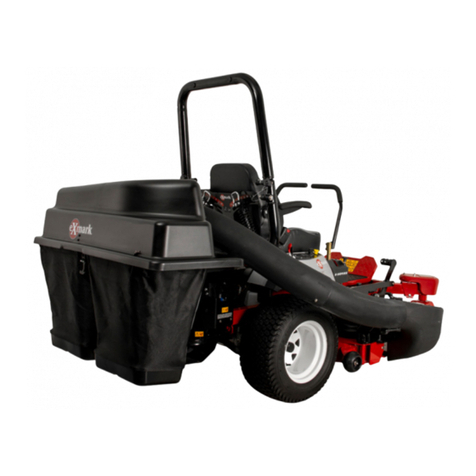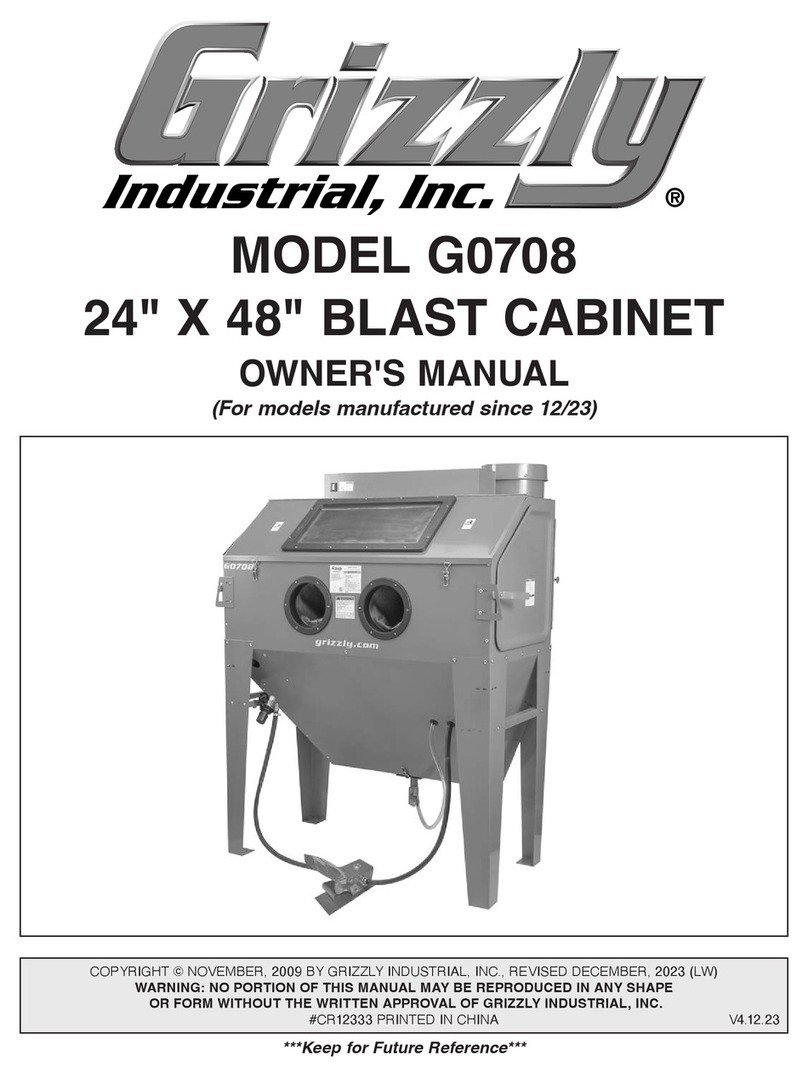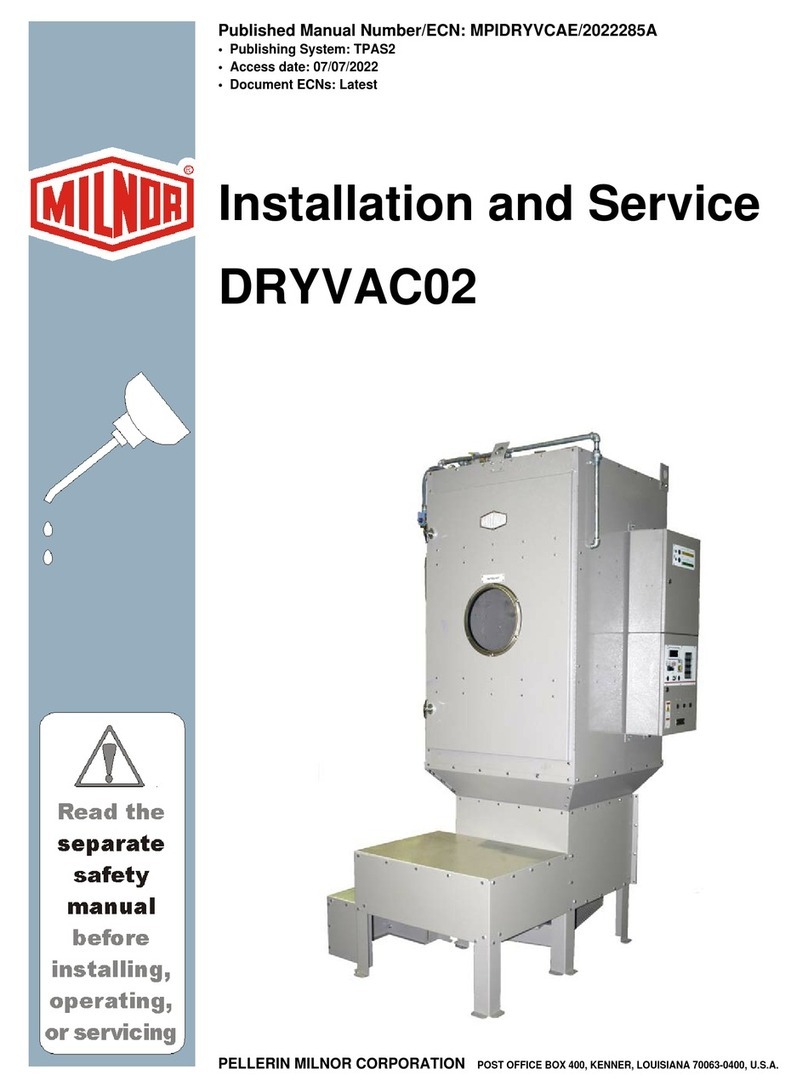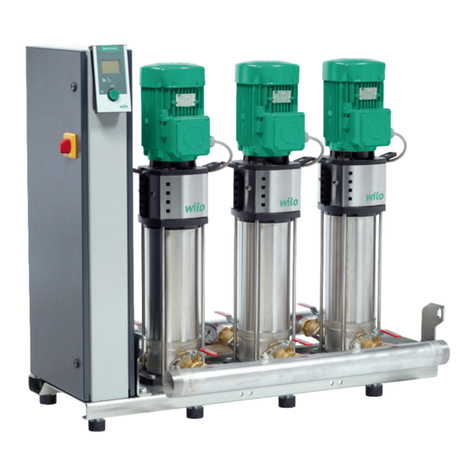Geo Knight Digital Knight K20S User manual

1
Digital KnightDigital Knight
Digital KnightDigital Knight
Digital Knight
16x20 Digital Swinger16x20 Digital Swinger
16x20 Digital Swinger16x20 Digital Swinger
16x20 Digital Swinger

2
Table of Contents
Introduction ...............................................................3
Setup & Suggestions .................................................4
Basic Use...................................................................4
Setting Time ..............................................................4
Setting Temperature ..................................................5
Setting Height / Pressure ...........................................6
Guidelines & Standard Settings ................................7
Programmable Presets ...............................................8
User Options Menu....................................................9
Fahrenheit / Celsius...................................................9
Timer Counter............................................................9
Recorded Pressings....................................................9
Pressure / Height Gauge Calibration.......................10
Height Gauge - High Point......................................10
Height Gauge - Low Point.......................................10
Pressure / Height Gauge Sensitivity........................11
Drop Sense...............................................................11
Beep.........................................................................12
Alarms .....................................................................12
Interchangeable Tables............................................13
Maintenance ............................................................13
Troubleshooting.......................................................14
Troubleshooting (cont.)...........................................15
Limited Warranty ....................................................16

3
Introduction
CongratulationsonyourpurchaseoftheDK20S16x20swinger!
This heat press machine has many exciting features, all of which are
meanttohelpmakeyourheattransferpressingendeavorsassuccessful
and easy as possible. Please take the time now to thoroughly read
through this manual to become acquainted with them. It will explain
some key features, concepts and methods that will save much time
and effort in using this press and in your heat pressing applications.
Throughout this manual, many areas and components of this
machine will be referred to by specific names. Please refer to the
illustrations below in order to become familiar with some of the
terminology used in this manual.
Handle
Pressure Knob
Top Head
Power Inlet
Height Sensor
Stop Collar
Clamp / Linkage
Heat Platen
Lower Table
Silicone Pad
Table Support
Base
Temperature
°Far/°Cel Indicator
Ready Indicator
Heating Indicator
Open Indicator
Timing Indicator
Done Indicator
Time
TEMP Button
PRG Button
Up/Down Arrows
Default Operating Mode of Controller

4
Setup & Suggestions
• Locate the press on a firm, sturdy work surface.
• The height of the bench/work space the press is located on would be
ideally 27” to 32” high.
• Attach the power cord from the rear to the underside of the top head.
• There is a power inlet under the top head that the modular cord will
plug into.
• Make sure the cord does not interfere with the lower table pressing
area, or the height sensor.
• The press should remain in the unclamped position when not in use.
Do not leave the heater block closed on the table surface when hot if
not using.
• Thetopheadshouldbeswungoverandabovethepressingtablewhen
not in use.
Basic Use
Setting Time
Thetimesettingisalwayseditableinthedefaultoperatingmode
of the controller. The left two digits of the time display are minutes.
The right two digits are seconds. This can be changed to Hours/
Minutes in the User Options Menu.
• Use the Up & Down arrow keys to change the time.
• HoldtheUporDownarrowkeydowntoincrementthevaluesquickly.
After a brief pause, the values will accelerate.
• PresstheUp&Down arrowkeystogethertoclearthesettingto00:00
• When the press is closed, the timing cycle starts. The “TIMING”
indicator will appear.
• Whenthetimingcycleisfinished, the “DONE”indicatorwillappear.
• Dependingonthetimeralarmchosen,thealarmmaycontinuetosound
at the end of the timing cycle until the press is opened.
• When the press is opened up, the “OPEN” indicator will appear.

5
Setting Temperature
• The control will regulate the heat platen temperature based on the set
point temperature. When the temperature falls below the Set Point,
the “HEATING” indicator will appear.
• WhenthetemperaturereachestheSetPoint,the“HEATING”indicator
will disappear and the “READY” indicator will appear.
• If the Set Point temperature is set to a temperature below the Current
temperature,thepress willwaitto cooldownto that SetPoint.At that
time, neither the “READY” or “HEATING” indicators will appear.
In the default operating mode of the controller, the displayed
temperatureistheCurrenttemperature.Thisistheactualtemperature
of the heat platen surface. Please note that the operating range of the
controller is from 150°F to 550°F (65°C to 288°C). During the first
heat up cycle of the press, the controller will display 150°F (65°C)
until the heat platen temperature rises above that temperature.
The Set Point temperature is the temperature the operator sets
the press for. This is the value the press will regulate the Current
temperature based on. The set point temperature may be changed
whenever necessary:
• When in the default operating mode, press the TEMP button.
• The Current temperature will be replaced by the blinking Set Point
temperature.
• Use the Up & Down arrow keys to change the Set Point temperature.
• HoldtheUporDownarrowkeydowntoincrementthevaluesquickly.
After a brief pause, the values will accelerate.
• Press the Up & Down arrow keys together to set the temperature to
350.
• Whenfinishedsettingthetemperature,presstheTEMPbuttontoreturn
to the default operating mode.

6
Setting Height / Pressure
Pressure is set manually using the large black Pressure
AdjustmentKnob.Thereisoneimportantruleofthumbwhensetting
pressure: The press MUST LOCK IN PLACE when lowering and
clamping the press. Do not simply let the platen rest on the pad. A
goodsolidtwo-handedlockingforceisrecommendedwhenfirstdoing
transfers to insure good results. A “Ka-Thunk” click/clamp sound
will result when locking the press in place.
• To decrease the pressure, turn the
pressure knob to the left,
counterclockwise.
• The top head will rise away from
the lower table.
• To increase the pressure, turn the
pressure knob to the right,
clockwise.
• Thetopheadwilllowertowardthe
pressing table.
The Digital Height/Pressure gauge is a helpful indicator of
the current height of the top head as the operator adjusts the
pressure.Itdoesnot effectpressureortheoperation of thepress.
It only helps the operator know where they are in regards to
height.
• If the pressure knob is turned rapidly enough, the display
will change to the pressure gauge display. The units of measure are a relative scale
from 0:00 to 10:00, with :02 increments. The top will always display PRS.
• To view the current pressure display value without changing it, simply pull the pin
up on the pressure gauge device on the pack post and let it drop back down. This
will force the PRS display to appear.
Thegaugedisplaysa reference valuebasedontheheightofthe heat plateninrelation
tothelowertable.The closer the heat platen istothesubstrateonthetable,theheavierthe
pressure. The further away, the lighter the pressure. The amount of actual force exerted
dependsonthethicknessof the item beingpressedandthedistancefromtheheat platen to
the table. The digital height/pressure gauge simply shows a relative value from 0:00 to
10:00 in fine resolution increments as to the current height of the platen.
This helps the user return to an exact pressure setting without the need of multiple
experimentations to find the proper pressure setting. By simply changing the pressure
untilthe correctvalueappears,previousheightsandpressuresettingsfordifferentthickness
substrates can be quickly reset without error.

7
Guidelines & Standard Settings
The following information covers some basic guidelines for
pressing, as well as some generic parameters for basic heat transfer
applications.
• Whenpressingshirts,itisoftenrecommendedthattheshirtsbequickly
pressedfor2secondsbeforetransferringtoremovewrinklesandwater
content.
• Whenpressingtwosidesof agarment,pullthegarmentoverthetable
so that the printed side drapes underneath the table. This will avoid
reheatingpreviouslytransferreddesignsonoppositesidesofgarments.
It will also avoid any bleed-through of inks on lighter fabrics.
• Avoidlayingcollars,cuffs,zippers, andotherbulkypartsofgarments
on the lower table, as these can adversely affect pressing conditions,
and reduce the life of the silicone pad.
• Whenpressing rigidsubstrates (plastics, metals,woods, etc.),be sure
that any protective films or laminates are removed before heating.
• Alwayscheckthatthetransferimageisfacedownagainstthematerial,
to avoid sealing the image against the heat platen instead of the
substrate.
Always follow the transfer media suppliers instructions when
pressing. The information below is for general reference only, and
may not be as accurate as the instructions provided by the transfer
media & imprintable substrate supplier.
• Hot Split Supplier Transfers 350-375°F, 8-10 secs
• Puff Transfers 350-375°, 5-7 secs (extra heavy pressure)
• Ink-Jet Transfer Papers 360°, 15-18 secs
• ColorCopy/Laser Transfer Papers 375°, 20-25 secs
• Sublimation Inks (Polyester Fabrics) 400°, 35 secs
• Sublimation Inks (Plastics) 400°, 1 min, 15 secs
• Sublimation Inks (Metals) 400°, 1 min
• Sublimation Inks (Woods) 400°, 1 min, 15 secs
• Sublimation Inks (Ceramics) 400°, 4 min

8
Programmable Presets Normal Default Mode
Presets Mode
Edit Preset Temp
Edit Preset Pressure/Height
Programmable presets are stored
programs where commonly used
Temperature, Time and Height
(pressure) settings can be stored and
retrieved.
Presets can be recalled simply by
pressing the PRG key, selecting the
program desired with the arrow keys,
and pressing the PRG key again. This
will update the current settings on the
press with the settings in the preset.
Presetscanbe editedbypressing the
TEMP key while inside the programs.
Whenthedisplayshows “SEt”,pressthe
TEMP key to change the temperature,
time and PRS (height) settings for that
preset. The TEMP key moves the
flashing value from Temp to Time to
PRS and back to “SEt”. The arrow keys
change the value.
So... the PRG key enters into the
presets,and alsoexits the presets.When
exiting the presets, the press’
temperature & time is updated with the
valuesthatwere storedinthe preset,and
the PRS display tells the operator what
height level to adjust the pressure to.
Press PRG
○○○○○○○○○○○○○○○○○○○○○○○
Edit Preset Time
Press TEMP
Press PRG Press TEMP Press TEMP Press TEMP

9
User Options Menu
Theuseroptionsmenuisasetoffeaturesandcalibrationoptions
that are programmable and adjustable by the user. It consists of a set
of menu items that can be scrolled through. Each menu item is a
feature whose values can be veiwed and /or changed. To enter the
user options menu:
• From the default operating mode, press the TEMP & PRG keys
simultaneously.
• Ifthe keysarenot pressedexactly atthesame time,you mayenter the
temperatureeditmode,orthepresetsmode.Exiteitherofthosemodes
and try again.
• To cycle from one menu item to the next, press PRG.
Fahrenheit / Celsius
The Current, Set Point, and Preset
temperature values can be displayed in
Fahrenheit or Celsius. To change the value to
ForC,usethearrowkeys.PressPRGtomove
to the next menu item.
Timer Counter
The timer displays as factory default
Minutes:Seconds. This can be changed to
Hours:Minutes. To change to value to HR
(hours:mins)orMIN(mins:secs),usethearrow
keys. Press PRG to move to the next menu
item.
Recorded Pressings
Thedigitalcontrolrecordsthenumberof
pressing cycles completed. This can be very
helpful when counting the number of full
pressingsthathavebeenperformed.Thevalue
will scroll from left to right. A “-” sign will
separatethebeginningandend of the number.
Toreset thecounttoZero, pressanarrowkey.
Press PRG to move to the next menu item.

10
Pressure / Height Gauge Calibration
Height Gauge - High Point
Turnthepressureknobtothelefttoraise
the top head. Do this until the highest level is
reached, without unscreing the internal bolt
fromthemainpost.Pressanarrowkeytolock
in that pressure value to PRH. The high point
of the pressure/height gauge is now defined.
Press PRG to move to the next menu item.
Height Gauge - Low Point
Turn the pressure knob to the right to
lower the top head. Do this until the lowest
level is reached. Press an arrow key to lock in
that pressure value to PRL. The low point of
thepressure/heightgaugeisnowdefined.Press
PRG to move to the next menu item.
The digital pressure/height gauge is calibrated from the factory
to recognize the lowest and highest pressure points settable on the
press. By defining the highest and lowest points of adjustment, the
controller is then able to accurately calculate and display the current
heatplatenheight&pressureastheoperatorturnsthepressureknob.
Itmaybecomenecessarytorecalibratethedigitalpressure/height
gauge if the displayed values of 00 through 10:00 do not properly
correspondtothelowestandhighestpressureadjustmentlevels.This
could happen if the stop collar is loosened to adjust the stopping
position of the heat platen over the lower table. Other factors may
also require the user to redefine the highest and lowest points of
pressure adjustment to the controller.
This is done very easily through the following User Options
Menu items:

11
Pressure / Height Gauge Sensitivity
Drop Sense
The PRR menu item allows the user to define how sensitive the
height gauge is for displaying purposes. This setting defines how
quickly the pressure display will appear during normal operation.
The lower the sensitivity setting, the less the amount of change is
required when turning the pressure knob to cause the PRS display to
appear during the default operating mode. The higher the number,
the greater the amount of change in height is required to display the
PRS value.
Usually a setting of 02 is fine for normal operation. However,
sometimes merely closing the press can cause the pressure/height
gaugetoregisterareadingandchangethedisplaytothePRSreading
undesirably.Byincreasingthisvalue,thePRSdisplaywillnotactivate
from smaller changes to the pressure. Conversely, sometimes the
operator may adjust the pressure knob, but the PRS value does not
displayunlesstheknobisturnedveryquickly.Byloweringthevalue,
the display will activate based on smaller and slower changes to the
pressure setting.
Use the arrow keys to change the PRR
sensitivity setting. Press PRG to move to the
next menu item.
Atemperaturealarmisavailable for warning the user of out-of-
range temperature conditions. The user can set this menu item to
soundanalarmiftheheatplatendropsbelowtheSetPointtemperature
bytheamountindicated.Thiscanbehelpfulwhenpressingsubstrates
that absorb an unusually large amount of heat, causing the platen to
fall in temperature quickly. If the results of the transfer begin to
deteriorate, the Drop Sense feature can help the user avoid this.
Use the arrow keys to set the degrees or
to turn this feature off. If the Current
temperature drops below the Set Point by this
amount or more, an alarm will sound. The
default value is OFF.

12
Beep
Normally,allbuttonsonthekeypadbeep
when pressed. This can be turned off, so all
button keypresses are silent. Use the arrow
keys to turn this feature On or Off.
Alarms
There are 10 different alarms available to choose from. These
alarms are sounded at the end of the timing cycle, as well as if the
Drop Sense feature is enabled.
Use the arrow keys to change the values
ortoturnthealarmoff.Pleasenotethedifferent
alarms below.
• denotes a short beep.
_ denotes a longer beep.
~ denotes infinte loop.
Alarm # Alarm Pattern
Off No alarm
01 • • • _
02 • • • _ ~
03 • • _
04 • • _ ~
05 • • •
06 • • • ~
07 _ ~
08 _
09 •
10 • (shorter)

13
Interchangeable Tables
The lower table on the machine is interchangeable. Different
sizedoptionaltablescanbeobtainedforvariousmaterials&handling
requirements.
The tables simply fit right
onto the table support. The sides
of the angle brackets on the
underside of the table will slide
along the sides of the square
tubingofthetablesupport.Make
surethesmallbarstripfallsinside
the table support tubing.
Maintenance
Themajorityofthepresshasbeendesignedtobeasmaintenance
free as possible. There are only a few aspects of the machine that
should be monitored to insure proper operation.
• The clamp/linkage assembly is the greatest area of wear and friction
on the press. The posts that connect to the heat platen should be
lubricated with SuperLube - a clear high-temperature lubricant. Do
notusegrease,whitelithium,orWD-40tolubricatetheclamp/linkage
assembly.
• Check the cord regularly to make sure there are no visible signs of
damage. Make sure the modular cord does not come in contact with
the heater. The modular cord should travel from under the head back
away from the machine.
• The silicone pad on the lower table can degrade after much use and
over an extended period of time. This pad is replaceable. If the pad
becomes dried out, cracked, or there are chunks removed from the
silicone pad, this can result in inconsistent and poor quality transfers.

14
Troubleshooting
Thefollowinginformationattemptstoaddressthemostprobable
mechanical and user issues with the press. Most issues with heat
transfer presses are application related. That is, they have to do with
the results of a particular transfer application.
For technical support on problems having to do with the final
results of a particular transfer paper or media, please contact the
supplierofthattransfermedia.Generally,themachinerymanufacturer
is unable to support the myriad of different transfer papers, inks and
imprintable items on the market from other resellers.
Q. Thetimerdoes notstartwhen Iclosethe heat platen,orthe timerdoes
not reset when I open the press up.
A. There are several probable causes for this. The timer is activated by a
micro-switchundertheheadof thepress.Itislocatedonasheetmetal
bracketwithslots.Whentheheadofthemachineisopened,thetimer’s
levershouldbedepressedandthesmallcontactbuttonunderthelever
should click in. When the head for the machine is lowered, the lever
of the timer switch should move down and the contact button click
out. The timer switch may need to be loosened and moved along the
brackettoapositionthatallowsfortheheatplatencovertotrigger the
switch. When tightening the switch against the bracket, do not
overtighten, the switch housing can crack very easily.
Q. The control displays Err when it first comes on, and I can not set the
temperature or use the press.
A. TheErrmessage willdisplayiftheheating signalfromtheplatenhas
been cut off, interrupted, or the heating sensor has failed. First check
the green heat connector that plugs into the digital control. This is
inside the top head. Unplug the power cord. Remove the two screws
in between the clamp/linkage that hold down the top panel, and
carefully lift the panel up and look inside at the digital controller. At
the top of the controller, there is a green connector that plugs in. This
isthetemperaturesensorwire.Checktomakesureisitproperlyseated.
Be sure not to unplug any other connectors. The temperature wire
connects to the center of the rear half of the heat platen. Check this
connection as well to see if the connection is correct.

15
Troubleshooting (cont.)
Q. Ipress thekeys on thekeypad, andthere isno soundor response from
the controller.
A. Check the connection of the keypad to the controller. This is inside
the top panel. Unplug the power cord. Remove the two screws in
betweentheclamp/linkagethatholddownthetoppanel,andcarefully
lift the panel up and look inside at the digital controller. The keypad
connector passes in through the top panel. It should wind around the
first circuit board and be seated fully into the connector. Check the
blackkeypadconnectorthatplugsintothecircuitboardtoseeifit has
pulled apart. Also check the area where the keypad connects to the
frontmembranetoseeiftheleadshavebeendamaged.Themembrane
keypad may need to be replaced.
Q. The clamp becomes extremely difficult to open and close, and
sometimes binds up.
A. The linkage pins and the posts that connect to the heat platen must be
lubricated with SuperLube or Permatex Anti-Seize - a clear, high
temperature lubricant. This type of lubricant can be obtained in any
auto parts or hardware store. Lower the heater but do not clamp the
press. Thoroughlycleanthepoststhatcomeoutoftheheatplaten,as
wellasthepins,the holesthepinspassthrough,andtheholestheheat
platen posts pass through. Relubricate the posts, pins, and all holes &
areas in the clamp assembly that receive motion, and reconnect the
assembly.
Q. The press has shut off, and will not come back on after checking the
power cord.
A. Test for power coming from the back side of the power cord inlet
socket.Testforpowercomingfromthebacksideoftheon/offswitch.
Test for power coming to the end of the black & white wires that
come from the on/off switch into the control board. This will narrow
down which power handling component needs replacement.
Q. I pressed a transfer upside down. The inks and transfer material have
burned onto the heat platen.
A. Coolthepressdown.Usinganonabrasivedetergentorcleaner,thoroughly
scrub the heat platen surface. Do not use an abrasive scrubber, or a pad
thatwill scratch theTeflon coatingofthe platen.If you arestill unableto
remove the transfer material, obtain teflon heater block cleaner from the
contact information located at the end of this manual.

16
Geo Knight & Co Inc
52 Perkins St, Brockton MA 02302 USA
(508)588-0186 - Fax (508) 587-5108
Limited Warranty
Geo Knight & Co warrants that the press is free from defects in both material and
workmanshipOne Year fromthe date ofinvoice to thebuyer. If anyparts or workmanshipare found to
bedefectiveinmanufacture,GeoKnight&Cowillrepairorreplacethedefectivepartsorworkmanship.
In addition, Geo Knight & Co warrants that the Digital Knight heat control is free from defects in both
material & workmanship and is covered under no-charge support for (3) years. Geo Knight & Co also
warrants that the heating element is warranted for the lifetime of the press, provided it is owned by the
original purchaser. This lifetime warranty on the heating element does not cover temperature sensor
failure, damage or disconnection. This warranty covers all parts to repair the defects, except when
damage results from accident, alteration, misuse or abuse, or when the machine has been improperly
installed, or modified in any way. If the press becomes defective during the limited warranty period of
one year for the entire press, three years for the control, or the lifetime of the heating element, Geo
Knight&Coreservestherighttorecallthedefectivepress tothefactoryforrepairsifonsitecomponent
replacement is deemed not possible by Geo Knight & Co. A return authorization must be granted by
Geo Knight & Co prior to its return.
If a press covered by the one year limited warranty must be returned to the factory for
repairs, Geo Knight & Co shall make every effort to repair buyer’s press. However, Geo Knight & Co
reserves the exclusive right to determine whether to repair or replace a defective press. If Geo Knight
& Co authorizes a replacement press, the warranty of the replacement press shall expire on the
anniversary date of the original machine’s invoice to the buyer.
There are no warranties which extend beyond the description on the face hereof. Seller
disclaimsanyimpliedwarrantyofmerchantabilityand/oranyimpliedwarrantyoffitnessforaparticular
purpose, and buyer agrees that the goods are sold “as is”. Geo Knight & Co does not warrant that the
functions of the press will meet the buyers requirements or expectations. The entire risk as to use,
quality and performance of the press lies with the buyer. In no event will Geo Knight & Co be liable
for any damages, including loss of profits, destruction of goods or any other special, incidental,
consequential or indirect damages arising from the use of the press or accompanying materials. This
limitationwillapply evenifGeo Knight&Coor itsauthorizedagent hasbeenadvisedof thepossibility
of such damage.
Table of contents



